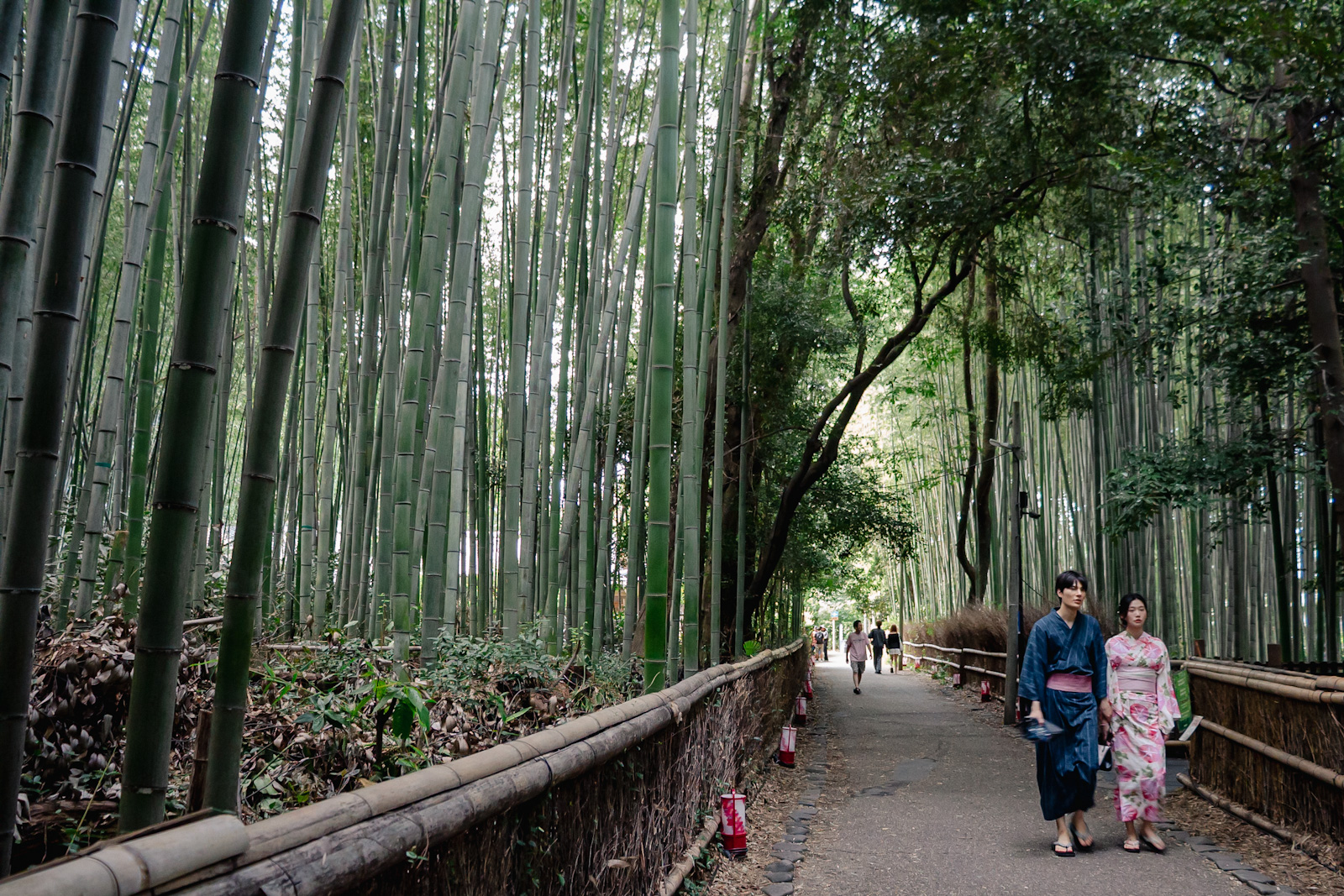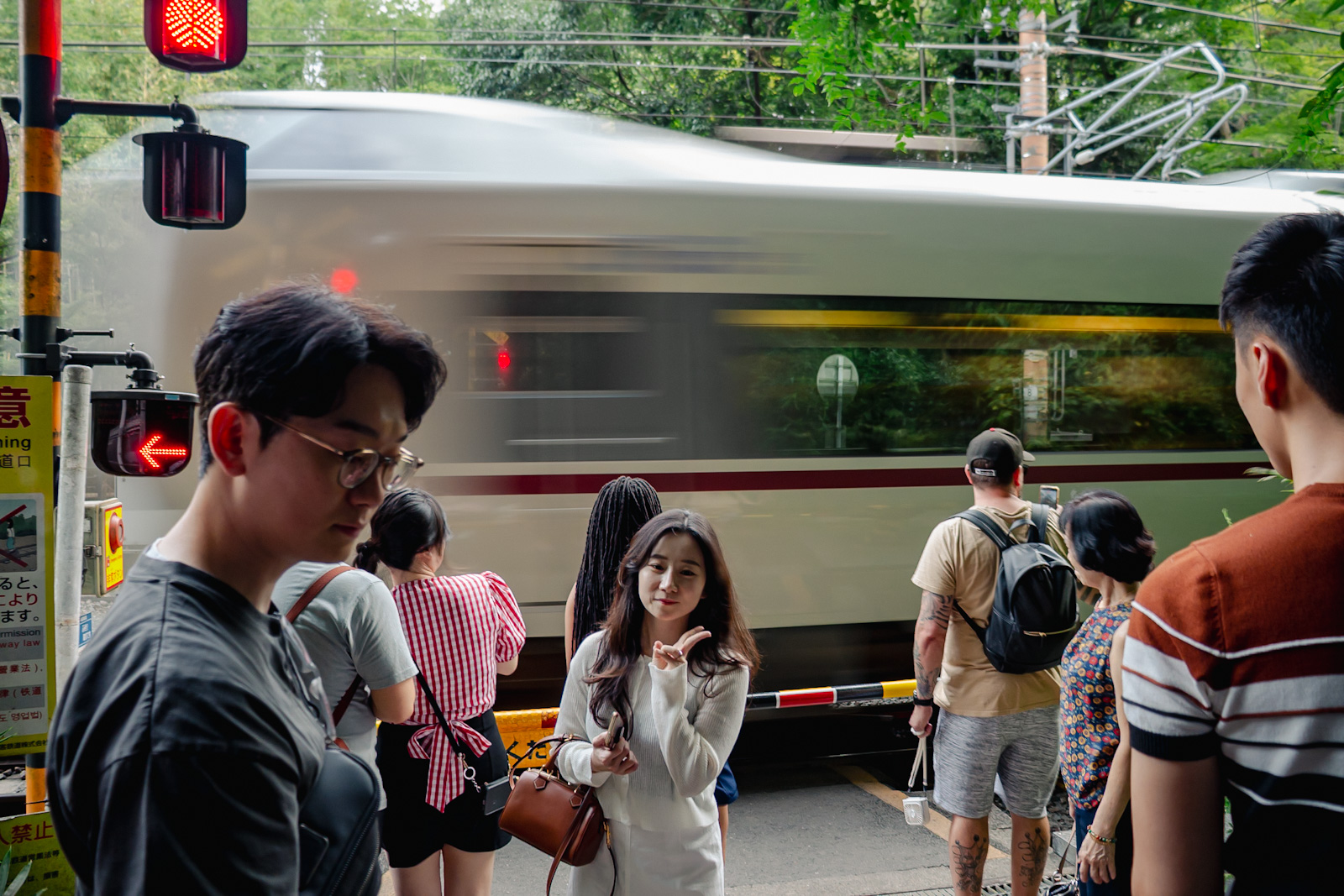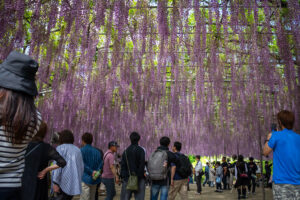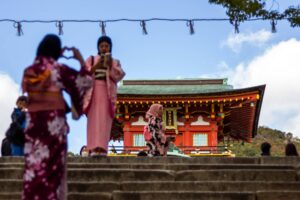Is Arashiyama worth it? It’s a question I, and many other travelers too, I’m sure, have pondered. Kyoto’s iconic bamboo forest gets mixed reviews. You’ve probably already seen pictures of the serene pathway lined with towering bamboo stalks. Along with the vermillion gates of Fushimi Inari and the glistening facade of Kinkakuji temple, the image is pretty much synonymous with the city. Some say it’s a must-see. Others insist it’s overrated. I had yet to make it there on any of my previous visits to Kyoto. But then my friend Eva, who was coming all the way from South Africa to visit, said it was top of her list. And that’s how I ended up answering the question for myself one Sunday afternoon in September.
We were staying near Nijo Castle and had had a slow start to the day, so we decided to take the bus up to Arashiyama—a pleasant 45-min ride through the northwestern part of the city. The district is located at the base of the Arashiyama Mountains and includes attractions like the Togetsukyo Bridge, Kameyama Park and Tenryuji Temple. The bamboo grove is, of course, the biggest draw, attracting huge crowds of visitors.
We stepped off the bus into the bustling shopping street that runs alongside Arashiyama Station and made our way down to the bridge to snap some photos. Togetsukyo, or “Moon Crossing Bridge” was originally built during the Heian Period, but was reconstructed in the 1930s. It offers gorgeous views of the Katsura River and the Arashiyama mountains. On the other side, there’s a monkey park and the Buddhist temple, Horinji, but since it was already late afternoon, we turned back to head towards the bamboo. We followed the signs down a side street until, suddenly, we were at the entrance to the grove.


It was…a bit underwhelming. Photos make the grove look enormous, but it’s actually quite small. Also, what is arguably the best route to take through the grove, because it’s surrounded by the most bamboo, is reserved for paying customers of the many guided rickshaw tours. (I mean, nothing against rickshaw tours. In fact, I recommend this one, which you can do before enjoying a live cooking experience at a prime Kyoto restaurant.) Still, the grove wasn’t as busy as some of the reviews I had read had said it would be. Maybe because it was so late in the afternoon? Or maybe we just got lucky.
Once you finish the first L-shaped loop through the grove, you have to cross over the railway line to get to the second part. The scenery around the railway crossing was straight out of an anime and this part of the forest was a lot less crowded. If you wait patiently for people to pass, you can definitely get some cool photos. It was around this time that I started to think maybe it wasn’t so bad after all.
Eva reminded me that for first-time visitors, especially those coming from countries where there is no bamboo, the forest is a unique experience. Plus, it’s free, which is a fair point. I think for seasoned travelers, or anyone who lives/has lived in Japan, though, it can feel like a tourist trap. There’s bamboo everywhere in the country and so it’s easy to find less crowded spots to enjoy the towering stalks. Hey, you may even be lucky enough to be invited to dig up bamboo shoots in your colleague’s private grove and barbecue them afterwards for dinner!
If you’re looking for a more authentic bamboo experience in Kyoto, you may be better off checking out other lesser known spots, like Jizoin Temple or Rakusai Bamboo Forest Park. Arashiyama is not just a bamboo grove, though. There’s an entire area to explore around it, and if you keep that in mind when visiting, you probably won’t be disappointed. We got to see some of the temples around the forest, browse the many shops dotted along the main street, and try some delicious street food. There’s also the monkey park and the river, so you can easily make a day out of it. Go for the whole experience, and not just the bamboo, and you’ll have a good time (it helps if you have great company, too.)



Visit Arashiyama Bamboo Forest
Hours: 24/7
Admission: Free
Arashiyama Bamboo Forest is a 13-min walk from JR Saga-Arashiyama Station, which can be reached in just 17 mins from JR Kyoto Station on the San-in Line. It’s also accessible by bus.



